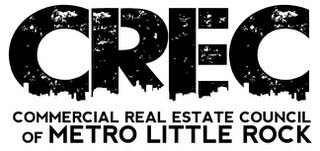Commercial real estate design and construction trends and technology
June 3-9, 2024
By Susan Hill Gele’
Design and construction of buildings reflect the tools and styles as well as the technology and perspectives of the times. Cloud-based documentation and communication systems, pre-engineered or precast supplies, and interchangeable walls would be unrecognizable to the builders of the past but are all elements of cutting-edge constructing or rehabbing of spaces today. Technological and industrial advancements will never replace the human touch required to create a space for a business, but it keeps moving the line and challenging those who design, engineer, and construct buildings.
Drew Williams, vice-president of business development for Baldwin & Shell, believes the level of complexity of a proposed new structure or rehab can dictate how much technology is warranted and what can be adaptable to available technology. “The construction market is ever-changing. Knowing how we can use technology to expedite the process of a job lets us integrate it into our projects.”
Some owners have to be educated on the benefits of including new technologies or procedures. Their willingness to include technological expenses in the budget varies depending on the scale of the project. “Having things like iPads onsite that are used to send photos, demonstrate compliance and safety - they can see it makes the process better. We don’t have to adopt everything that comes out for each job; it has to make sense.” Other spaces that have a more complicated plan might use technology more easily. “Having known tenants and specs allows for a more specified use” of technology like robotics and can be an easier way to illustrate the benefits, says Williams.
One sophisticated tool Baldwin & Shell has in its toolbox is a robot that etches blueprints on foundations. A virtual design coordinator works with clients and subcontractors before construction begins to get drawings into a system that help everyone understand the project better. Dusty Robotics FieldPrinter prints layouts for all trades in a single pass, ensuring everyone builds off the same data. A project’s supervisor or general contractor can see what is printed on the foundation and determine if all the plans fit together properly, allowing easier coordination of multiple installation plans. This preconstruction work helps save money for the clients and makes it less likely for mistakes to happen in the field if information is confirmed before work begins.
The increased use of pre-cast or pre-engineered materials are another development that has had a significant impact on building design and construction in the last 20 years. Some concrete construction materials can be poured into a mold at a plant, then cured and transported to a site rather than poured and cured there. A project designed for pre-engineered materials, generally metal, utilizes standard lengths and widths to construct buildings that can then be made unique through the facades. Including these materials can help avoid weather-related delays and preparation time.
Chris Cerrato, president of Evo Business Environments, has seen the evolution of materials and impact of technological advances change his products, speed of project completion, and client structure. The prefab modular walls of the ‘60s were unattractive, sometimes ill-fitting pieces. Flash forward to today, when attractive, customizable, floor-to-ceiling walls can be fitted with power, data, and insulation for better acoustics. The availability of this type of product has changed the way Cerrato works with clients. Evo works with the architect, general contractor and owner to design, order and install prefabricated walls, doors, electrical and custom millwork cabinets. “A general contractor can construct or remodel a big open space and do the perimeter work quickly. We can work on ideas and a design for the interior up to a month before the product shows up. It gives more flexibility. If needs have changed, that can be adapted into the design. Placement of these modular walls can happen in days rather than the old way of building studs and drywall months before finish-out with subs all working at the same time.” The combination of a pre-engineered building and customizable floor-to-ceiling walls can dramatically alter the production schedule of a project that has to be completed quickly.
Some owners can see completed construction or space improvements in their mind’s eye, but that is not the norm. Architects and designers have seen considerable changes in the way they are able to help their clients see what will be. Many people believe they can read floor plans but find they miss details that end up being very important. Kate East, principal and interior designer for AMR Architects, regularly uses software that provides realistic 3-D renderings allowing the viewer to spin around in a space. “A Zoom call with a virtual walk through of the space gives clients peace of mind and confidence in their decision-making. They are appreciative to have more than a floor plan to see what the space will look like,” she says.
Working with brokers has changed with these technological advances, as well. East notes that talking through the functions that will take place in the space influences how the space is designed, especially in a rehab. “Focusing on functions helps them separate what it is versus what it could be. This lets brokers quickly show the potential of real estate.”
Cloud-based systems allow architecture and engineering teams to all work in the same 3-D model. “We can coordinate all items in the model during the construction drawing phase,” East says.
Without even including the impact of artificial intelligence (AI), the changes in the way buildings are designed and constructed have seen tremendous change in the last few years. Local commercial real estate professionals are using these tools and changes to ensure metro Little Rock’s CRE industry remains vibrant and relevant.
Susan Hill Gele’ is the executive director of the Commercial Real Estate Councel of Metro Little Rock.



